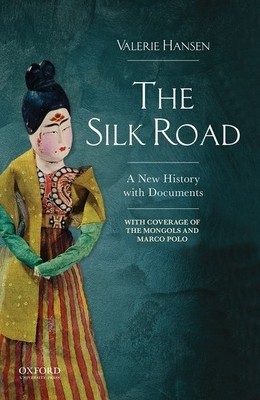
- We will send in 10–14 business days.
- Author: Valerie Hansen
- Publisher: Oxford University Press, USA
- ISBN-10: 0190208929
- ISBN-13: 9780190208929
- Format: 15.5 x 23.4 x 3.3 cm, minkšti viršeliai
- Language: English
- SAVE -10% with code: EXTRA
Reviews
Description
The Silk Road is iconic in world history; but what was it, exactly? It conjures up a hazy image of a caravan of camels laden with silk on a dusty desert track, reaching from China to Rome. The reality was different--and far more interesting. In The Silk Road: A New History with Documents, Valerie Hansen describes the remarkable archeological finds that revolutionized our understanding of these trade routes. Hansen explores eight sites along the road, from Xi'an to Samarkand, where merchants, envoys, pilgrims, and travelers mixed in cosmopolitan communities, tolerant of religions from Buddhism to Zoroastrianism.
Designed for use in the classroom and based on the award-winning trade edition (OUP, 2012), The Silk Road: A New History with Documents offers a selection of excerpted primary sources in each chapter. The wide-ranging sources include memoirs of medieval Chinese monks and modern explorers, letters written by women, descriptions of towns, legal contracts, religious hymns, and many others. A new final chapter provides coverage of the Silk Road during the period of Mongol rule.EXTRA 10 % discount with code: EXTRA
The promotion ends in 24d.02:44:25
The discount code is valid when purchasing from 10 €. Discounts do not stack.
- Author: Valerie Hansen
- Publisher: Oxford University Press, USA
- ISBN-10: 0190208929
- ISBN-13: 9780190208929
- Format: 15.5 x 23.4 x 3.3 cm, minkšti viršeliai
- Language: English English
The Silk Road is iconic in world history; but what was it, exactly? It conjures up a hazy image of a caravan of camels laden with silk on a dusty desert track, reaching from China to Rome. The reality was different--and far more interesting. In The Silk Road: A New History with Documents, Valerie Hansen describes the remarkable archeological finds that revolutionized our understanding of these trade routes. Hansen explores eight sites along the road, from Xi'an to Samarkand, where merchants, envoys, pilgrims, and travelers mixed in cosmopolitan communities, tolerant of religions from Buddhism to Zoroastrianism.
Designed for use in the classroom and based on the award-winning trade edition (OUP, 2012), The Silk Road: A New History with Documents offers a selection of excerpted primary sources in each chapter. The wide-ranging sources include memoirs of medieval Chinese monks and modern explorers, letters written by women, descriptions of towns, legal contracts, religious hymns, and many others. A new final chapter provides coverage of the Silk Road during the period of Mongol rule.

Reviews